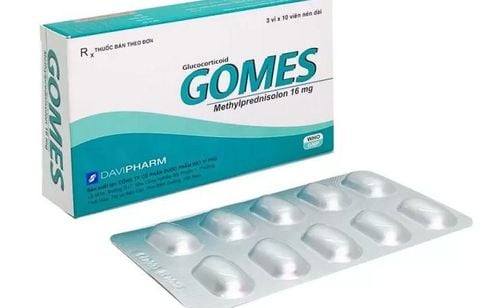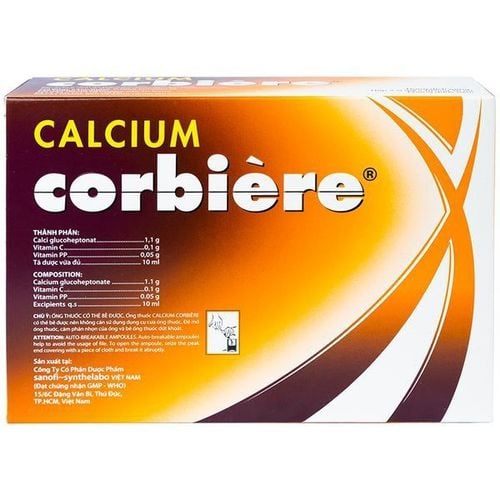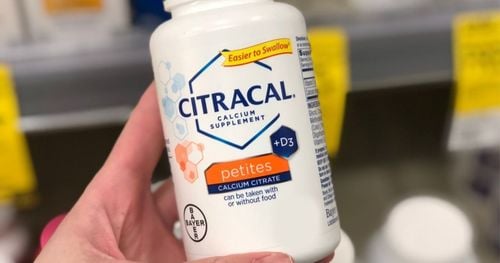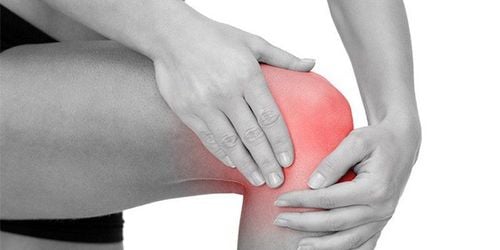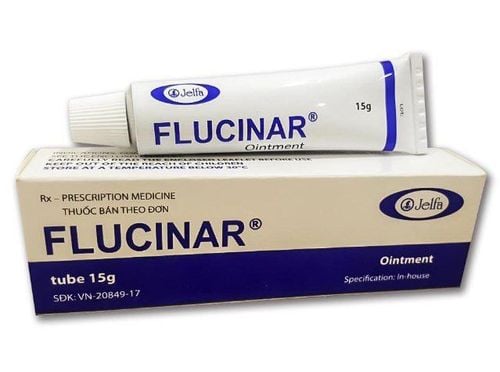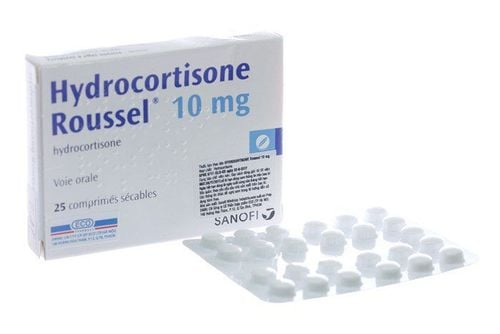This is an automatically translated article.
Article by Pharmacist Nguyen Thu Giang - Clinical Pharmacist - Faculty of Pharmacy - Vinmec Times City International Hospital
Corticosteroids are a group of anti-inflammatory drugs used in many indications with different pathologies. Corticosteroid therapy is associated with an increased risk of bone loss and fracture. Therefore, the prevention and treatment of corticosteroid-induced osteoporosis is very important.
1. Why can corticosteroids cause osteoporosis? Corticosteroids (or glucocorticoids) are a group of anti-inflammatory drugs used in many different indications with active ingredients such as prednisolone, methylprednisolone, triamcinolone, beclomethasone, betamethasone, dexamethasone...
Corticosteroid treatment is associated with an increased risk bone loss and fracture. Studies have shown that corticosteroid-related fractures occur as soon as bone density values are higher than those in postmenopausal osteoporosis.
The harmful effects of corticosteroids on bone are caused by direct effects on osteoblasts, osteoblasts and osteoclasts. Corticosteroids increase bone resorption and decrease bone formation. The risk of bone loss is highest during the first few months of taking the drug, after which the rate slows but gradual bone loss continues. With chronic long-term corticosteroid use, bone resorption slows down and bone formation inhibition becomes the primary cause.

Việc phòng ngừa và điều trị loãng xương do corticoid là rất quan trọng
2. Risk factors Risk factors (or predisposing factors for fractures in patients taking corticosteroids) include: advanced age, high doses of corticosteroids, and prolonged courses.
However, according to some literature, fractures are reported to about 30-50% of patients using corticosteroids and occur immediately at relatively low corticosteroid doses (equivalent to about 2.5-7.5mg prednisolone per day). ) and immediately after short-term use (<30 days).
The risk of bone loss and fracture is higher in patients using systemic corticosteroids (oral or injectable). Corticosteroids used by inhalation in the treatment of bronchial asthma and chronic obstructive pulmonary disease have fewer side effects than oral corticosteroids. There are currently no consistent data showing an association between inhaled corticosteroids and an increased risk of osteoporosis or fracture. Therefore, doctors often prioritize the use of topical corticosteroids if possible.
The risk of fracture in patients using corticosteroids decreases rapidly during the first year after stopping the drug.

Nên ăn uống đủ chất để phòng ngừa các vấn đề về cơ xương khớp
3. Prevention and treatment of corticosteroid-induced osteoporosis 3.1. General measures To prevent musculoskeletal problems related to corticosteroids, you should eat a variety of foods, especially foods rich in protein and calcium, vitamin D. At the same time, you Regular exercise, especially weight-bearing exercises, is great to prevent both bone loss and corticosteroid-induced muscle atrophy.
Besides, you should quit smoking, avoid drinking a lot of alcohol and take measures to prevent falls. Elderly people should be assessed for fall risk by healthcare professionals and given optimal family support in preventing falls.
You should only use corticosteroids when prescribed by your doctor, do not arbitrarily buy more prescriptions without being re-evaluated or not discussed with your treating doctor. You need to take the correct dose as prescribed, do not increase or decrease the dose on your own. Usually, your doctor will choose the lowest dose of corticosteroids possible and use them for the shortest possible time.
Any patient using corticosteroids for 3 months or more will be assessed by their physician for fracture risk. Along with corticosteroid use, other factors are also used to predict fracture risk such as age, history of fracture, body mass index (BMI), family history (having parents with hip fracture). . If you are <40 years of age, you should have your bone density assessed by your doctor when taking high doses of corticosteroids (equivalent to about 20mg of prednisolone/day) for at least 1 month or taking any corticosteroid in a chronic long-term course.
3.2. Calcium, vitamin D, and preventive medications Your doctor may recommend 1000-1200mg of calcium and 600-800 units of vitamin D per day through your diet or supplements if you take corticosteroids in any way. any dose level with a course of 3 months or more. Corticosteroids reduce intestinal calcium absorption and increase urinary calcium excretion. Therefore, calcium supplementation may help reduce bone loss in patients receiving corticosteroids. According to data from studies, concomitant calcium and vitamin D supplementation is more effective in improving bone density than calcium supplementation alone in patients receiving corticosteroids.
Although calcium and vitamin D supplements are essential, they may not be enough if you use high doses of corticosteroids. Sometimes, your doctor will prescribe medication for you.
Calcitriol is an active metabolite of vitamin D, more effective than vitamin D in some patients, can be used in combination with calcium in the prevention of bone loss in patients receiving corticosteroids. However, because of the possible risk of hypercalcaemia and hypercalciuria, and because of the availability of more effective drugs, calcitriol is rarely prescribed.
Bisphosphonates, parathyroid hormones and monoclonal antibodies can be prescribed by the doctor for each suitable patient after weighing the benefits, risks, costs and expectations. of the patient.
Follow Vinmec International General Hospital website to get more health, nutrition and beauty information to protect the health of yourself and your loved ones in your family.
Please dial HOTLINE for more information or register for an appointment HERE. Download MyVinmec app to make appointments faster and to manage your bookings easily.




